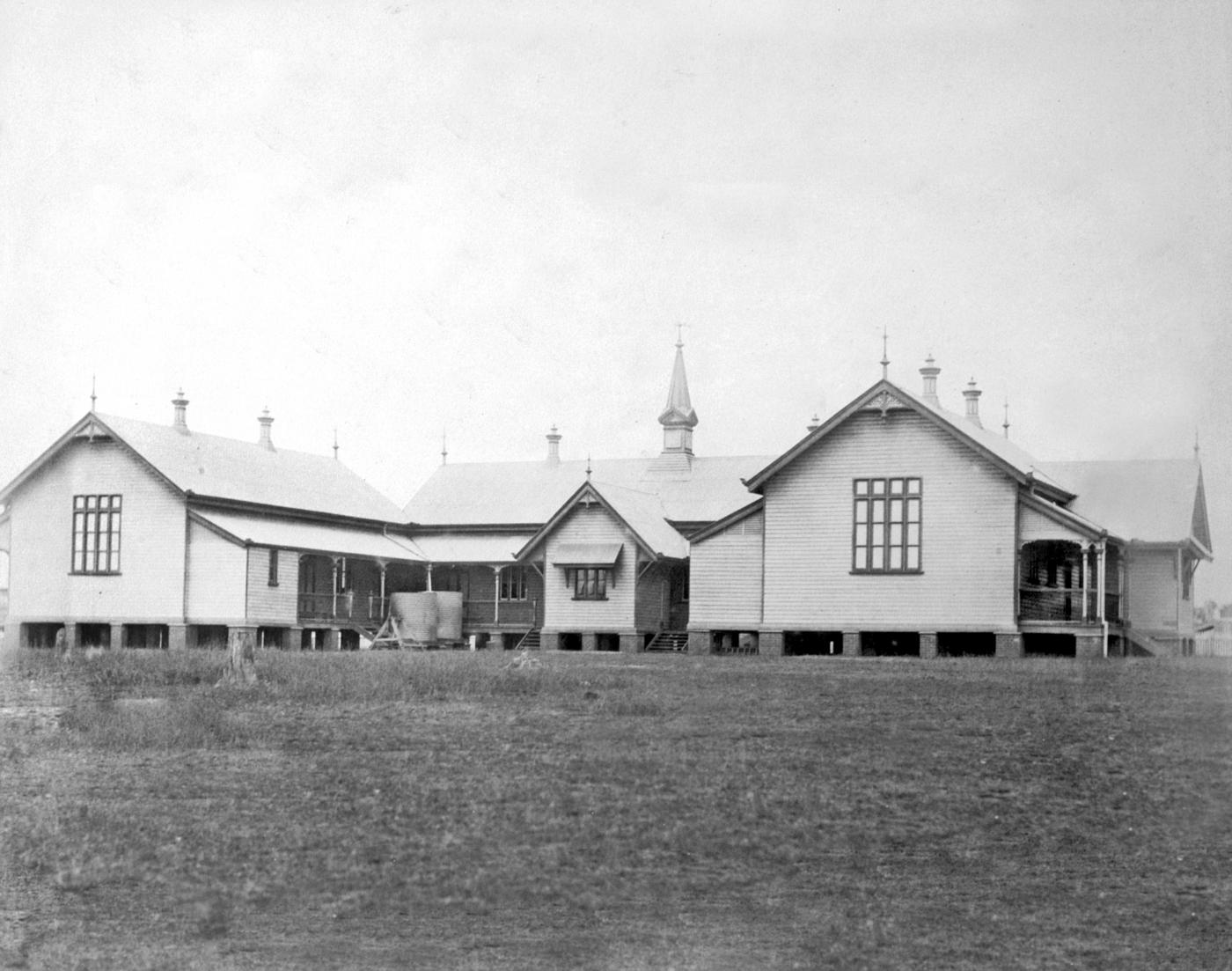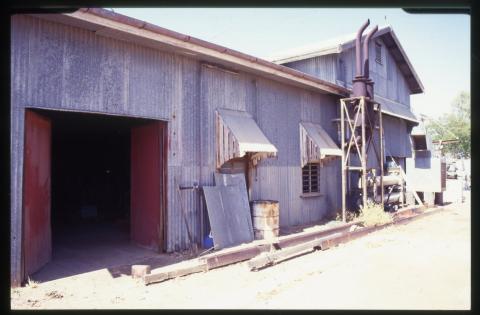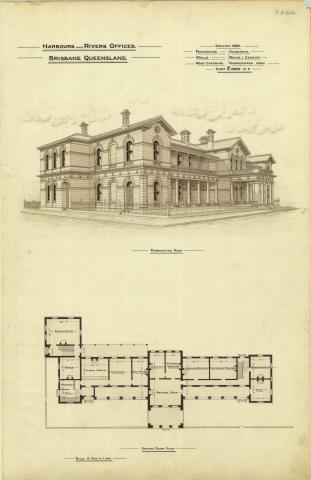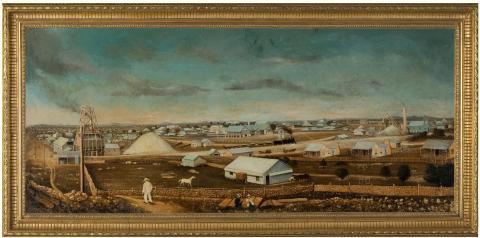
- News of the day
-
Bundaberg Mail and Burnett Advertiser,
Local and general.
Completion already marks the arrangements for Mrs. Redmond's picnic to school children to-morrow. The supplies received, while varied and suitable to all tastes, are so abundant as to far surpass expectancy. Given fine weather the outing will be one of unusual merit, affording unlimited pleasure to young and old alike. Everything that forethought could devise has been given effect to, and the day will, indeed, be a children’s day, which we hope the good heart of the promoter will endeavour to establish as an annual institution. Sports of all kinds will be indulged in, and for the lucky winners an ample supply of prizes have been provided, so that there is in reality a kindly gift for all the children who take active part in the proceedings. A slight misunderstanding has arisen as regards the offer by Mr. Cottell, photographer. Let it be understood he will photograph half-a-dozen of the prettiest girls on the ground — a committee, independent of himself, being appointed to select them — and provide them with two or three pictures each. From the enthusiasm that is already manifested among school children and parents there can be little doubt but that the day will prove one of the brightest in the midwinter recess. The procession is timed to leave the Queen's Theatre at 9.30 tomorrow morning, and headed by the Primitive Methodist Band, assisted by the Salvation and Town Bands, will proceed via Woongarra-street, Walla-street, and Bourbon-street to the Show Ground. The school children will occupy the following positions, which have been arranged by ballot as were the positions of the bands — First, the children of the East Bundaberg school, than St. Mary's R.C., South East Bundaberg, Central, and North Bundaberg children. Messrs. Totton and Walker have been appointed to marshal the children in position. In connection with the sports the following have been appointed the executives— Handicappers, Messrs. F. Brady, A. McIntosh, and M. Reddan ; Starters, Messrs E. Brady, W. G. Lewis, and P. Duffy ; Judges, Messrs. F. Buss, W. E. Curtis, and J. F. Davies. Judges in Physical Drill: Instructor James, who may appoint two colleagues to assist him; Sports Committee: Messrs. Matthewson, Cullen, Caniffe, Redmond, jun., Shields, McMannie, and M. Hawe. The Executive Committee on behalf of the Hospital are Messrs. Taudevin, (president), J. E. Turner, R. Totten, J. Yates, J. C. Walker, J. Rowland, and W. Paterson. All children are desired to be present at the Theatre in time to admit of a start promptly at 9.30, and, we are desired to remind them to bring their pannikins with them.
- Background
-
The school now known as Bundaberg Central State School was established, as Bundaberg South State School in January 1875, on a site in Bourbong Street, transferring to its current site at Crofton Street in July 1890.
In 1871 a school reserve was created on the site of Bundaberg's present day Buss Park, Christ Church Anglican Church and the Civic Centre in the centre of town. The local community raised the required finance for the first buildings of Bundaberg South State School, which were completed by January 1875. The average attendance was 123 pupils in July 1875.
In September 1883, separation of the school into a boys' school and a girls' and infants' school was approved by the Department of Public Instruction. Bundaberg South Boys' School opened in a new building on the site, while the Bundaberg South Girls' and Infants' School opened as a separate school in the existing school building.
By the 1880s the school site had become valuable real estate, prompting the town council to repeatedly attempt to have the school moved. Finally, in 1889, the Minister for Public Instruction directed that the school transfer to a new site, two blocks to the south of the existing school, as it was in the interest of the public to have the old site for business purposes.
Consequently, a new building for the Girls' and Infants' School was built by William Calvert for £2600 on the new site, which occupied a whole block bounded by Woondooma, Barolin, Crofton and Maryborough streets. The Boys' School and its building were moved to the new site and the new Girls' and Infants' School was completed by July 1890.
Bundaberg South Girls' and Infants' State School was built to a standard plan supplied by the Queensland Government. The government developed standard plans for its school buildings to help ensure consistency and economy. From the 1860s until the 1960s, Queensland school buildings were predominantly timber-framed, an easy and cost-effective approach that also enabled the government to provide facilities in remote areas. Standard designs were continually refined in response to changing needs and educational philosophy and Queensland school buildings were particularly innovative in climate control, lighting, and ventilation. Standardisation produced distinctly similar schools across Queensland with complexes of typical components.
In 1879 the Department of Public Instruction appointed architect Robert Ferguson as its first superintendent of school building design. He immediately revised the design of schools to address deficiencies in ventilation and lighting and this period of school design was pivotal in this regard. Ferguson introduced tall and decorative ventilation spires to the roof and louvred panels to the gable apex to vent the classrooms. Additional and larger windows were introduced with high sill heights that did not allow draughts and sunlight to enter the room. The overall form was lowset on brick piers and in larger schools, multiple classrooms were arranged symmetrically around a parade ground. The designs remained single-skin to eliminate 'receptacles for germs and vermin' but were lined externally rather than internally to address the previous weathering problem. Importantly, Ferguson's buildings were decoratively-treated with a variety of elaborate timber work and were heralded by educationalists as 'far superior in design, material and workmanship to any we have before built'.
The new teaching building for the Bundaberg South Girls' and Infants' State School was constructed to a standard Ferguson design. It comprised three blocks (two identical, one slightly longer) arranged in a symmetrical, U-shaped configuration around a parade ground. Each block was lowset with chamferboard-clad walls, a high-pitched gable roof, verandahs on two sides, and attached teachers' rooms. The buildings were ornamented with timber finials and brackets attached to end gables, typical of the ‘carpenter gothic' style of Ferguson schools. The ceiling structure was exposed on the interior, with the raked ceilings lined with diagonal timber boards. Verandah enclosures for hand basins and hat storage were provided on the parade ground-facing verandahs, which linked the three blocks together. Roof fleches, ventilation panels and window hoods also provided climate control and ventilation to the interiors. Also, a new teacher's residence was constructed in the northeast corner of the site in 1890.
On 26 January 1926 the two Bundaberg South schools were amalgamated as the Bundaberg Central State School. Around this time, the Boys' School building, which had been moved onto the site in 1890, was relocated to Bundaberg West State School.
In 2014, Bundaberg Central State School continues to operate from its 1890 site. The school retains the 1880s Ferguson building, the 1900 and 1907 playsheds and remnants of its forestry plot. It is important to the city having operated from the site since 1890 and having educated generations of Bundaberg students. Since establishment the school has been a key social focus for the Bundaberg community with the grounds and buildings having been the location of many social events.
Courtey of the Queensland Heritage Register
/152.3483611,-24.8700187,7/450x450@2x.png?access_token=pk.eyJ1IjoicXNhLWRpc2NvLXFsZCIsImEiOiJjamJmdTgyZXEyeWNjMnlxZm8xcmtieHgxIn0.lmT9J5tTPKGuuccQgCVSAg)



